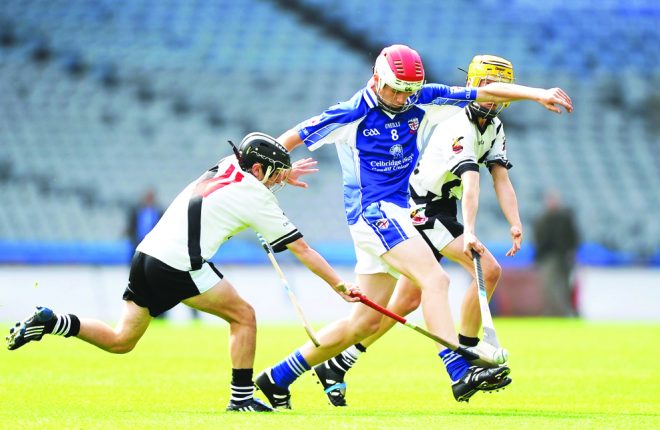
Children’s skill levels can advance at different speeds
Based on a recent article I penned, I delivered a course to Longford GAA County Development Squad coaches on the seven steps of Skill Development.
When I wrote the article I added rough age groups (as is common in GAA), in which development of each skill could be coached.
But skill is not chronological, it’s developed by biological maturity levels, so I advised the coaches to take each player through their skill development based on their maturation level and subsequent biological ability.
Perhaps in future, games/competitions, not age related, could be based on players picked as teams from each ‘step’ level.
To add further to the debate, here, I will concentrate on the stages of skill development with reference to what (i) to look for in players and (ii) the needs of players at each stage.
I will see the player learner as three types – Beginner, Intermediate and Advanced which equate to the three stages commonly used when referring to skill development – Cognitive, Associative and Autonomous.
1. The Beginners Stage (in two parts)
(a) Initial Skill – Key points to look for: The first contact a player has with the skill. The player may have no idea of what to do to perform the skill.
Players need to – have a clear mental image (big picture) of what correct execution of skill looks like; understand the fundamental positions/stances/patterns of the skill (head, hands, feet). Feel safe when performing the skill, reach a comfortable level with some movements or feeling that may be unfamiliar but are part of skill to be learned. This stage equates to Step One (learn the skill) in my earlier article.
(b) Acquired Skill – Key points to look for: Players become capable of (i) co-ordinating key components of movement; (ii) doing them in correct order to be able to perform a rough form of the skill. Their movements are not well synchronised or under control and lack rhythm and flow. Their actions are inconsistent and lack precision, so player has to think about what they’re doing to actually do it (not yet in muscle memory). Doing them quickly or under pressure or in competition conditions, skill quality seriously deteriorates; Players need to understand clearly what to do, have a good mental picture of skill; perform lots of repetitions at own pace under stable, easy, safe conditions; practice both sides; find solutions by themselves (trial and error) with some coach feedback. This stage should, if player needs are addressed, see the player complete Step 2 (Perform The Skill very well) and perhaps, Step 3 (Perform The Skill very well at speed.)
2. The Intermediate Stage
(c) Consolidate Skill – Key points to look for: Players do the movements/skill with correct form. Movement control, rhythm, synchronization are done under easy/stable conditions. Movements can be done consistently with precision, but only some performance elements can be maintained if pressures, demands, conditions increase so overall performance is consistent as players develop a more personal style.
Players Need To: Be exposed to variety of situations/conditions often. Be challenged by more demanding tasks/conditions to find ‘trial and error’ solutions themselves (discovery learning) with less coach feedback. Practice skills under fatigue at competition intensity dealing with errors made (by self or in coach clinic). Players now can have completed ‘Step 4’ – perform skill very well, at speed under fatigue and ‘Step 5’ – perform skill very well at speed, under fatigue and under pressure.
3. The Advanced Stage (in two parts)
(d) Refined Skill – Points to look for: Players performing skill close to ideal re form and speed. Performance is very consistent, precision is high under demanding/complex/varied conditions and situations. Only minor fine tuning needed to optimise skill usage. Focus by player now not on skill but on using it in games (skillfully), even making quick adjustments if needed. Players can now reflect on how well they can correct errors in technique and ability. Players need to be – Bbexposed to demanding complex/competitive scenarios that require high level usage. By now they can be able to solve problems they encouter. If they can they are at ‘Step 6’ – perform the skill very well, at speed, under fatigue, under pressure consistently.
(e) Independent Creative Skill – Points to look for: This stage/step is only achieved by elite players, eg, Gooch Cooper, Peter Canavan, Nessi, Ronaldo, Sony Bill Williams. Their performance is ideal with a distinct and efficient personal style. Players need to be – Be exposed to complex, demanding competitive situations which require Perfect Performance Skill Usage. Often players need to develop own solutions.
Thus skill in stages/step requires much time and volume of practice to reach higher levels.
Fewer players reach Step 7/Creative Advanced Stages; other reach a step/stage and regress back before moving forward again.
Progress is not age-related, it is maturation related, eg, some county players at the same age could be at different levels of skill development.
Why? Skill is Not Chronological.
Receive quality journalism wherever you are, on any device. Keep up to date from the comfort of your own home with a digital subscription.
Any time | Any place | Anywhere











